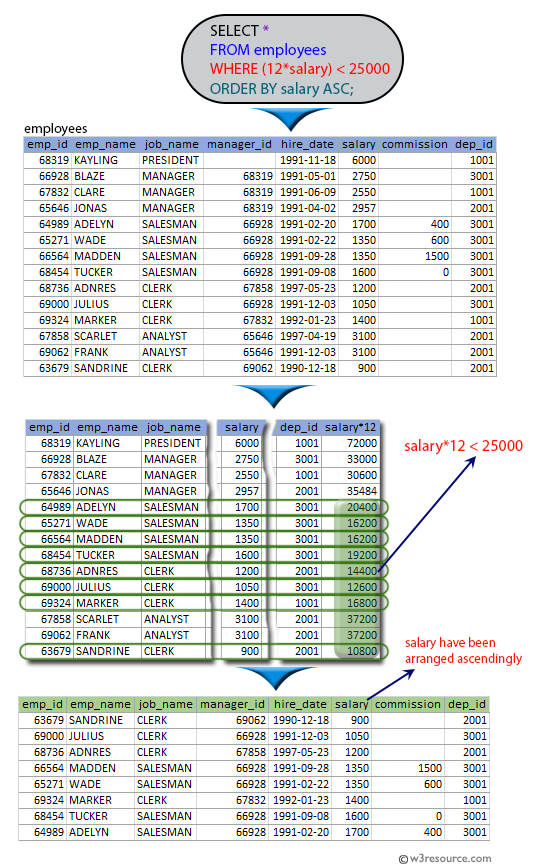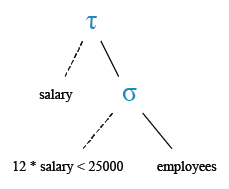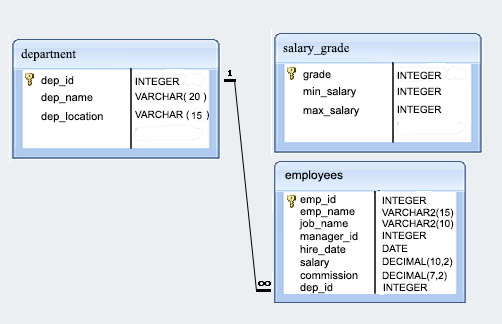SQL Exercise: Sort employees in ascending order by annual salary
[An editor is available at the bottom of the page to write and execute the scripts.]
78. From the following table, write a SQL query to find the employees whose annual salary is less than $25,000 per year. Sort the result set in ascending order of the salary. Return complete information about the employees.
Pictorial Presentation:

Sample table: employees
Sample Solution:
SELECT *
FROM employees
WHERE (12*salary) < 25000
ORDER BY salary ASC;
Sample Output:
emp_id | emp_name | job_name | manager_id | hire_date | salary | commission | dep_id --------+----------+----------+------------+------------+---------+------------+-------- 63679 | SANDRINE | CLERK | 69062 | 1990-12-18 | 900.00 | | 2001 69000 | JULIUS | CLERK | 66928 | 1991-12-03 | 1050.00 | | 3001 68736 | ADNRES | CLERK | 67858 | 1997-05-23 | 1200.00 | | 2001 65271 | WADE | SALESMAN | 66928 | 1991-02-22 | 1350.00 | 600.00 | 3001 66564 | MADDEN | SALESMAN | 66928 | 1991-09-28 | 1350.00 | 1500.00 | 3001 69324 | MARKER | CLERK | 67832 | 1992-01-23 | 1400.00 | | 1001 68454 | TUCKER | SALESMAN | 66928 | 1991-09-08 | 1600.00 | 0.00 | 3001 64989 | ADELYN | SALESMAN | 66928 | 1991-02-20 | 1700.00 | 400.00 | 3001 (8 rows)
Explanation:
The said query in SQL that selects all columns of employees from 'employees' table whose annual salary is less than 25000, and orders the results in ascending order by salary.
The WHERE clause filters the results to include only those employees whose annual salary, calculated by multiplying their monthly salary by 12, is less than 25000.
The ORDER BY clause ordered the results by salary in ascending order.
Relational Algebra Expression:

Relational Algebra Tree:

Go to:
PREV : Employees except given job in ASC order of salaries.
NEXT : Employees work as SALESMEN, sorted by their salary.
Practice Online
Sample Database: employee

Have another way to solve this solution? Contribute your code (and comments) through Disqus.
What is the difficulty level of this exercise?
Test your Programming skills with w3resource's quiz.
